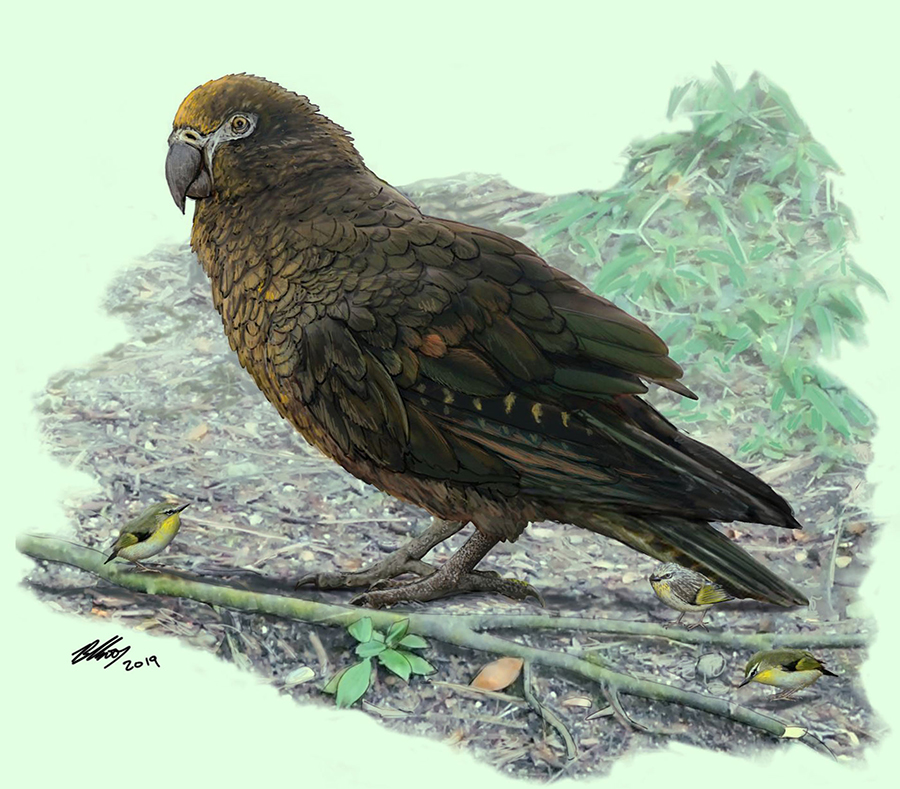Heracles inexpectatus: World’s Largest Parrot Lived 19 Million Years Ago in New Zealand

An international group of paleontologists has found two incomplete bones from an ancient parrot with a mass of 7 kg, double that of the heaviest known parrot, the kakapo (Strigops habroptila).
Named Heracles inexpectatus, the giant parrot lived in New Zealand about 19 million years ago (Miocene epoch).
The bird was about 3.3 feet (1 m) tall and had an estimated mass of about 7 kg.
Like the kakapo, it was a member of an ancient New Zealand group of parrots that appear to be more primitive than parrots that thrive today on Australia and other continents.
“New Zealand is well known for its giant birds,” said Dr. Trevor Worthy, a paleontologist Flinders University.
“Not only moa dominated avifaunas, but giant geese and adzebills shared the forest floor, while a giant eagle ruled the skies. But until now, no-one has ever found an extinct giant parrot — anywhere.”

The fossilized bones of Heracles inexpectatus were found near St Bathans in Central Otago, New Zealand, in an area well known for a rich assemblage of Miocene birds.
“Heracles inexpectatus, as the largest parrot ever, no doubt with a massive parrot beak that could crack wide open anything it fancied, may well have dined on more than conventional parrot foods, perhaps even other parrots,” said University of New South Wales’ Professor Mike Archer.
“Its rarity in the deposit is something we might expect if it was feeding higher up in the food chain. Parrots in general are very resourceful birds in terms of culinary interests.”
“New Zealand keas, for example, have even developed a taste for sheep since these were introduced by European settlers in 1773.”
Heracles inexpectatus lived in a diverse subtropical forest where many species of laurels and palms grew with podocarp trees.
“Undoubtedly, these provided a rich harvest of fruit important in the diet of Heracles inexpectatus and the parrots and pigeons it lived with. But on the forest floor the giant bird competed with adzebills and the forerunners of moa,” said Professor Suzanne Hand, also from the University of New South Wales.
“The St Bathans fauna provides the only insight into the terrestrial birds and other animals that lived in New Zealand since dinosaurs roamed the land more than 66 million years ago,” added Dr. Paul Scofield, senior curator at Canterbury Museum, Christchurch.
The research is published in the journal Biology Letters.
_____
Trevor H. Worthy et al. 2019. Evidence for a giant parrot from the Early Miocene of New Zealand. Biol. Lett 15 (8); doi: 10.1098/rsbl.2019.0467
Source: www.sci-news.com








